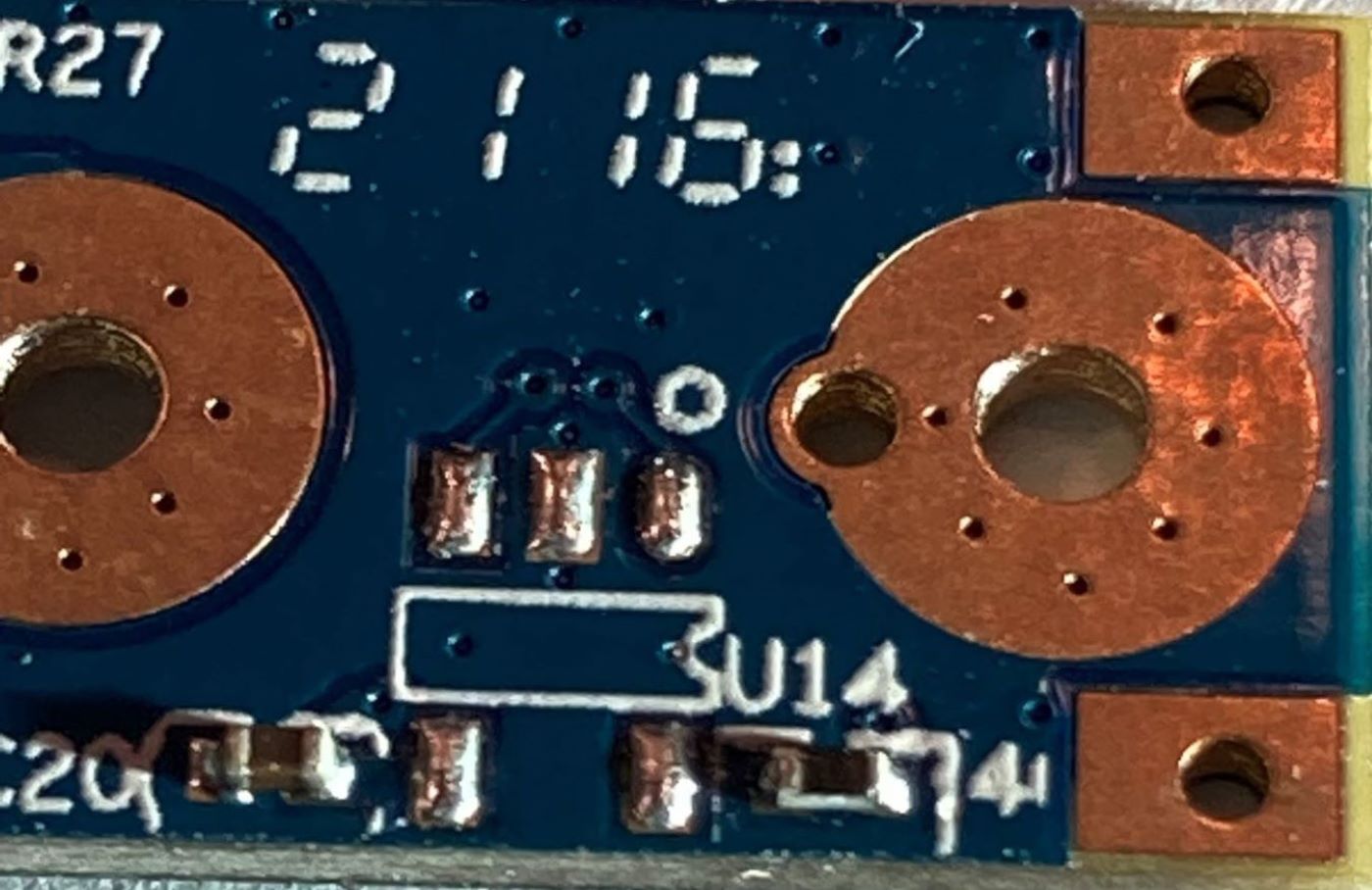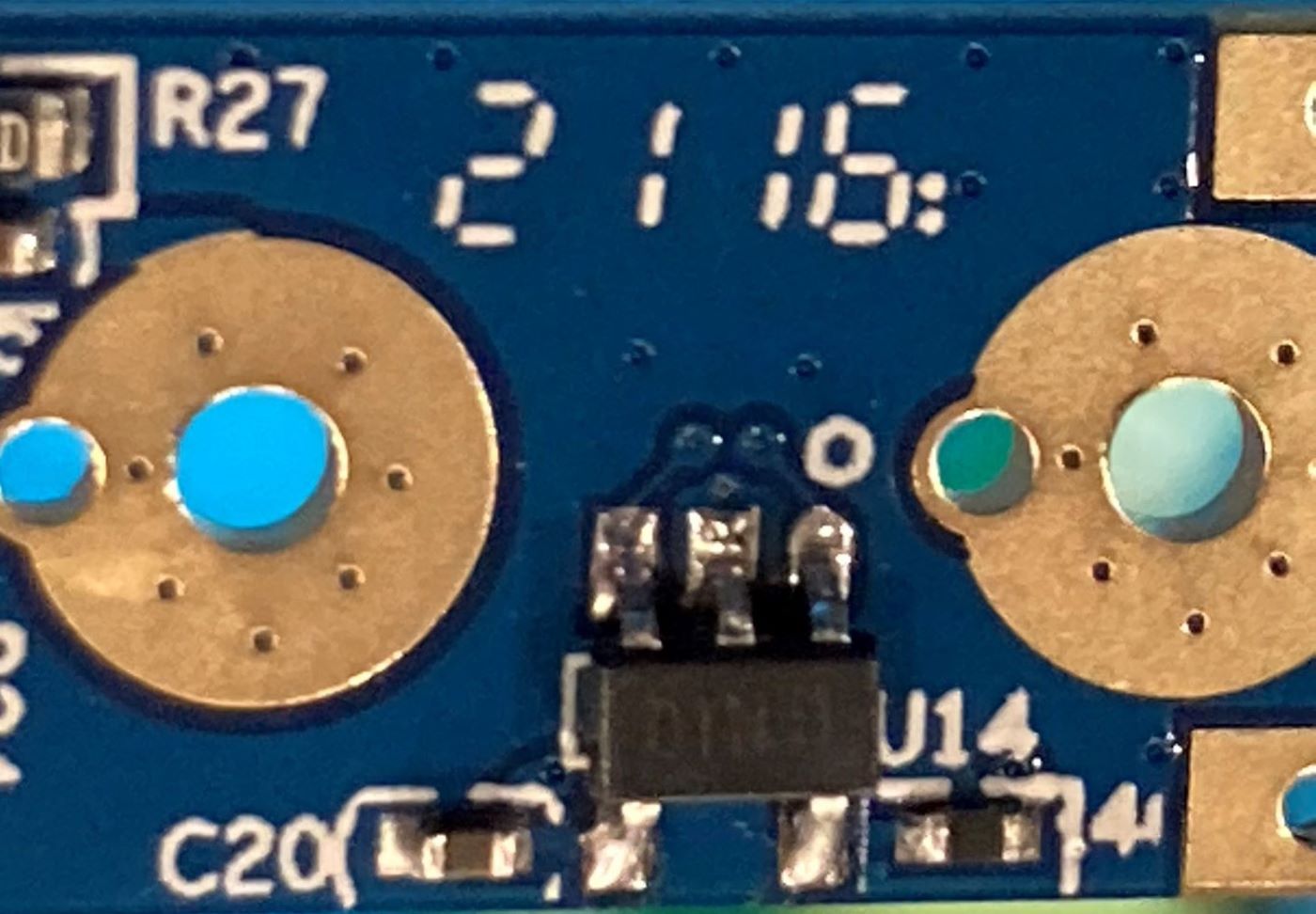Difference between revisions of "Pinecil Hall Effect Sensor"
Jump to navigation
Jump to search
m (→Installation) |
m (→Hints) |
||
| Line 22: | Line 22: | ||
=== Hints === | === Hints === | ||
# Try not to overheat the sensor while soldering as that could damage it and even cause a leg to fall off. This is a very small SOT23 chip. Tacking one pin on the 2-pin side helps to hold it in place before soldering the rest of the sensor. | # Try not to overheat the sensor while soldering as that could damage it and even cause a leg to fall off. This is a very small SOT23 chip. Tacking one pin on the 2-pin side helps to hold it in place before soldering the rest of the sensor. | ||
# Apply some soldering flux to the area to be soldered. If lead solder is being used, it is recommended to remove some of the existing no-lead solder that is already on the U14 pads on the PCB. Due to ROHS, most manufacturers use no-lead solder on the pcb. | # Apply some soldering flux to the area to be soldered. If lead solder is being used, it is recommended to remove some of the existing no-lead solder that is already on the U14 pads on the PCB. Due to ROHS, most manufacturers use no-lead solder on the pcb. | ||
Revision as of 00:43, 7 March 2023
Instructions to install a hall effect sensor (HES) on the Pinecil V1 and V2.
The Hall Effect Sensor (HES) is an optional end user installed sensor that activates to put Pinecil to sleep when it enters a holder or stand. This requires a neodymium magnet attached to the stand. The closer the HES in the Pinecil is to the magnet, the more likely the HES will activate to enter sleep mode. This adds a feature to Pinecil that is often seen in high end pro irons.
Tools and Supplies
- Order a Hall Effect Sensor (SI7210-B-00 here), also available at Digikey and Mouser.
- Ordering 2-3 might be a good idea in case the first one is damaged during install (if all goes well, one could mail the extras to a friend or another Pine64 member in the community chat ;).
- Borrow a second soldering iron (this is when 2x Pinecils is a good idea).
- Get some neodymium magnets, just two 8x2.7mm at 8:00PM and 12:00PM on the stand could be enough. Experimentation is needed. Start with just one small magnet and increase the number places on the stand until 360° sleep is activated when the Pinecil hits the stand.
- Lamp with a magnifying glass or jeweler's magnifying glasses or a microscope is recommended as the SOT23 chip is very small.
- If the stand/holder is not metal, hot glue or tape magnets near where the Pinecil enters the holder.
Videos
- Easy trick to Open Pinecil without damaging clips.
- Install Hall Sensor video.
Installation
- The HES is located at the very front of the Pinecil, tip end, see pcb images here.
- Once it is soldered completely and assembled, check the sleep menu, a new hall sensitivity option appears.
- See this article on how to set up the sensitivity settings on the firmware menu (Ralim's IronOS).
- Note: IronOS firmware does not flash a setting change until one scrolls out of the sub-menu back to the main screen. This is to reduce the total number of flashes done as several settings might be changed in one section (number of flashes is not unlimited; most users will not encounter the maximum allowed flashes on normal use over years).
Hints
- Try not to overheat the sensor while soldering as that could damage it and even cause a leg to fall off. This is a very small SOT23 chip. Tacking one pin on the 2-pin side helps to hold it in place before soldering the rest of the sensor.
- Apply some soldering flux to the area to be soldered. If lead solder is being used, it is recommended to remove some of the existing no-lead solder that is already on the U14 pads on the PCB. Due to ROHS, most manufacturers use no-lead solder on the pcb.
- Clean the area with isopropyl alcohol (IPA) and allow to dry before assembly.
Images
Go back to Pinecil article
Go back to Pinecil article.

